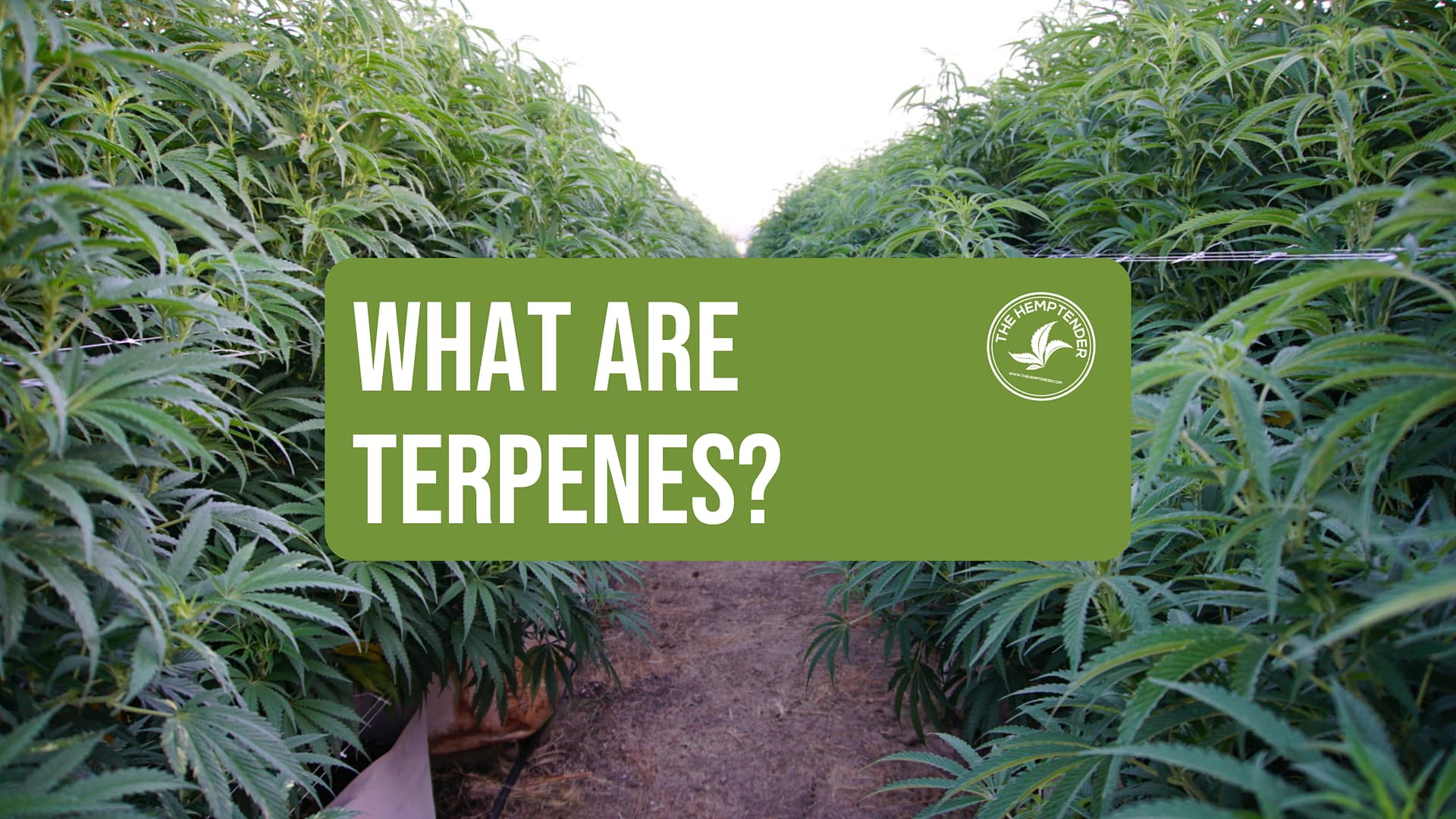What Are Terpenes and How Do They Make Cannabis and Hemp Stronger?

In this blog, we will explore the different types of terpenes found in cannabis and hemp, their potential benefits and effects, and how they interact with other compounds in the plant to create unique experiences for users. From the musky, earthy aroma of myrcene to the spicy, woody scent of caryophyllene, we will delve into the world of terpenes and discover the many ways they can enhance the cannabis experience.
What are terpenes?
Terpenes are a large and diverse class of organic compounds that are produced by a variety of plants, including cannabis. They are responsible for the unique aromas and flavors of different cannabis strains, and they also have potential therapeutic properties. Terpenes are found in the essential oils of plants, and they interact with other compounds, such as cannabinoids (like THC and CBD), to create the unique effects of different strains.
They provide different scents and flavors like pine, lemon, mint, and skunk, among others. They also have a potential therapeutic effect and are being researched for their potential therapeutic properties, such as anti-inflammatory, anxiety-reducing, and pain-relieving effects. Some of the most common terpenes found in cannabis are myrcene, limonene, and linalool. Stay tuned, we’ll be going more in depth about the top 5 terpenes found in hemp and cannabis and their effects below.
What do terpenes do in cannabis and hemp?
In cannabis and hemp, terpenes interact with other compounds such as cannabinoids (like THC and CBD) to create the unique effects of different strains. They are also believed to play a role in the entourage effect, which is the theory that different compounds in the plant work together to produce a range of therapeutic effects.
Some terpenes found in cannabis and hemp have been studied for their potential therapeutic properties. For example, myrcene has been studied for its sedative and pain-relieving properties. Limonene has been studied for its anti-anxiety and mood-lifting properties, and pinene has been studied for its anti-inflammatory and pain-relieving properties.
Terpenes can also act as a natural insect repellent, and some studies have suggested that they may have anti-inflammatory properties. They are also used in the cosmetics and food industry as fragrances and flavorings.
It’s worth mentioning that research on the effects of terpenes in cannabis and hemp is still ongoing, and more studies are needed to fully understand the potential therapeutic properties of different terpenes.
Terpenes play a role in the strength of cannabis effects
The effects of different cannabis strains are thought to be related to the specific combination and concentration of compounds found in each strain, including terpenes and cannabinoids. Indica strains are generally considered to have more relaxing and sedating effects, while sativa strains are thought to have more uplifting and energizing effects.
Indica strains typically have higher levels of myrcene, which is known for its sedating properties, and lower levels of terpenes such as limonene and pinene which are known for their uplifting effects. Sativa strains, on the other hand, tend to have higher levels of terpenes such as limonene and pinene, which are thought to contribute to the strains’ energizing and uplifting effects.
Hybrid strains are a combination of both Indica and Sativa strains, and therefore, they have a combination of different terpenes and cannabinoids, which results in a combination of effects. Terpenes are not the only factor that contribute to the effects of a strain, but they are known to play a key role in determining the unique effects of different strains.
It’s worth mentioning that the distinction between Indica, Sativa, and hybrid effects is not always clear-cut and the effects can vary depending on the individual and the specific strain, and the way the plant was cultivated and processed. The classification of strains based on the effects is not always accurate, and the effects can be influenced by many factors, including the individual’s own physiology and environment.
The Top 5 Cannabis Terpenes and their Potential Effects and Benefits
While there are hundreds of different terpenes out there, there is only a handful that appears in high concentrations in cannabis and hemp. Below we’re breaking down the top 5 key players.
Pinene
Pinene is a terpene that is found in most plants on earth, including pine trees, rosemary, basil, and hemp. It is known for its distinct pine-like aroma and is one of the most commonly found terpenes in nature.
Pinene has a variety of potential therapeutic effects. It has been studied for its anti-inflammatory properties and is thought to be effective in reducing inflammation in the respiratory tract. This can make it useful for conditions such as asthma and bronchitis.
Pinene is also believed to have cognitive-enhancing properties. It is thought to act as a natural acetylcholinesterase inhibitor, which means that it can help to improve memory and mental focus. Some studies have also suggested that pinene may have anxiolytic properties, which means that it may be able to help to reduce anxiety.
It has also been suggested that pinene may have antimicrobial properties and can be used as a natural insect repellent.
Myrcene
Myrcene, also known as β-myrcene, is a terpene that is found in a wide variety of plants, including mangoes, bay leaves, and cannabis. It is known for its musky, earthy aroma and is one of the most abundant terpenes found in cannabis alongside THC.
Myrcene has a variety of potential therapeutic effects. It has been studied for its sedative properties and is thought to be effective in promoting relaxation and reducing insomnia. This can make it useful for conditions such as anxiety and depression.
Myrcene is also believed to have pain-relieving properties. It is thought to act as an anti-inflammatory, which can help to reduce pain and discomfort. It also has been suggested that it can act as an antioxidant, which can help to protect cells from damage caused by free radicals.
Myrcene is also thought to increase the permeability of the blood-brain barrier, allowing other compounds, such as THC and CBD, to pass through more easily and potentially increase their effectiveness.
Limonene
Limonene is a terpene that is found in many plants, including citrus fruits, and rosemary. It is known for its strong citrus aroma and is one of the most widely used terpenes in the food and fragrance industries.
Limonene has a variety of potential therapeutic effects. It has been studied for its anti-anxiety properties and is thought to be effective in reducing stress and promoting a sense of calm. This can make it useful for conditions such as anxiety and depression.
Evidence suggests that Limonene may have anti-inflammatory properties. It may also have mood-lifting properties; some studies suggest that it might help to improve mood and alleviate symptoms of depression and anxiety.
Linalool
Linalool is a terpene that is found in plants like lavender, mint, and hemp. It is known for its floral, lavender-like aroma and is widely used in the fragrance and cosmetic industries.
Linalool has a variety of potential therapeutic effects. It has been studied for its sedative properties and is thought to be effective in promoting relaxation and reducing insomnia. This can make it useful for conditions such as anxiety and depression.
Linalool is also believed to have pain-relieving properties. It is thought to act as an anti-inflammatory and can help to reduce pain and discomfort. It also has been suggested to have anxiolytic properties, which means that it may be able to help to reduce anxiety.
Evidence suggests that Linalool may also have anti-epileptic properties, though it’s important to keep in mind that terpenes will not stop or treat seizures. You should always consult a doctor if you’re experiencing seizures or convulsions.
b-Caryophyllene
Caryophyllene is a terpene that is found in spicy plants, including black pepper, cloves, and cannabis. It is known for its spicy, woody aroma and is one of the few terpenes that has a direct interaction with the body’s endocannabinoid system.
Caryophyllene has a variety of potential therapeutic effects. It has been studied for its anti-inflammatory properties and is thought to be effective in reducing inflammation and pain.
Caryophyllene is also believed to have anxiolytic properties, which means that it may be able to help to reduce anxiety. It also has been suggested to have antimicrobial properties and can be used as a natural insect repellent.
Where to find terpenes at The Hemptender
The Hemptender utilizes natural hemp for our many products and extracts. For example, you’ll find many natural terpenes in our hemp and THC-a flower, as well as our concentrated moon rocks or dabs. You can also find natural terpenes in our full-spectrum tinctures, and in other products like teas and edibles. Whether you’re looking for lab-tested hemp that you can trust or just looking to get your flavor on, you can count on The Hemptender on every step of your wellness journey.




